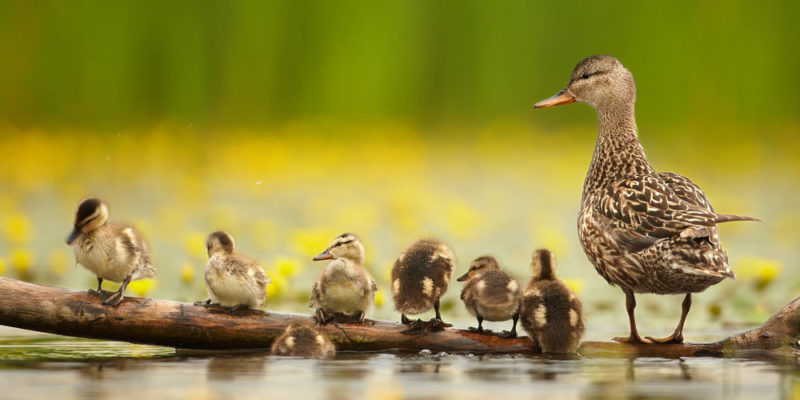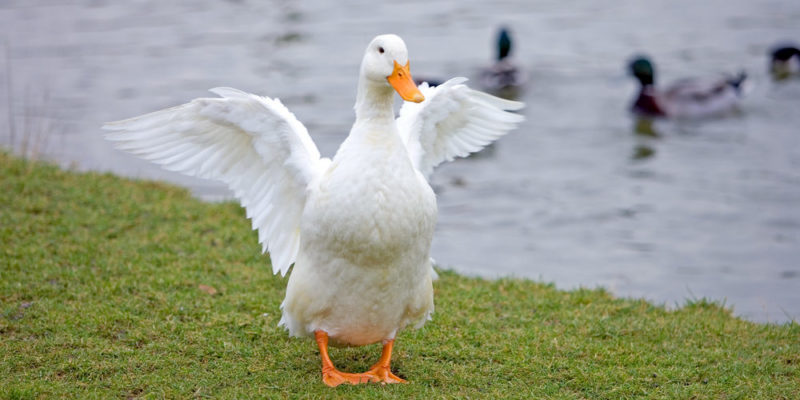We explain everything about ducks and what their main characteristics are. Also, how is their feeding, reproduction and more.
What is a duck?
The duck is an aquatic bird of the Anatidae family that is migratory and usually lives near freshwater or saltwater habitats, such as lagoons, swamps, wetlands or rivers. All ducks are capable of flying and traveling great distances each year and have an average life expectancy of ten years.
There are more than a hundred different species of ducks throughout the world that are classified into subfamilies, the most common are: red, domestic, torrent, bicolor suirirí, grebe and real. Some species tend to live for long periods in the same place and that depends on the amount and variety of food available in the habitat.
The duck, like most birds, has a special gland called uropygeal or oily that secretes an oil capable of waterproofing the plumage. When the duck preens, it spreads this oil all over its body with its beak, thus keeping its plumage dry and fluffy, which helps regulate its body temperature .
Duck Characteristics

Among the main characteristics of the duck are:
- Its legs with skin membranes between the fingers that allow it to swim at high speeds.
- Its claws that allow it to grab onto various surfaces such as dirt, rocks or slippery terrain.
- Its wide and short beak that is usually flattened. Some species have a wedge-shaped beak that helps them find food, the colors of the beak can vary depending on the species between orange, yellow, pink or blue.
- Its compact body that allows it to swim underwater and its short neck that has the ability to turn completely backwards and allows it to clean the feathers on its back.
- Its feathers can be of different colors depending on the species. In general, males have more variety of colors than females, which have brown-toned feathers to better camouflage with their young.
Duck reproduction

The duck usually crosses between the different species for its reproduction , which generates, among other issues, a wide range of different plumages. It is an oviparous animal , that is, the female lays eggs to have young, which are usually between 12 and 20 eggs per mating season. It usually nests among aquatic plants.
During the first three months of life, the duck depends on the mother's protection, because its plumage has not finished forming and it only has a yellow down. At this stage it is very sensitive to extreme temperatures. The main predators of ducks and their young are the raccoon, the owl , the hawk and the snake . .
Duck feeding

The duck's diet is varied and balanced, it eats plants , larvae, small fish, seeds, snails, worms and insects . The type of diet depends on the environment it inhabits and its behavior according to the species, for example, ducks that dive at great depths usually feed on plankton.
The above content published at Collaborative Research Group is for informational and educational purposes only and has been developed by referring to reliable sources and recommendations from technology experts. We do not have any contact with official entities nor do we intend to replace the information that they emit.
MA student of the TransAtlantic Masters program at UNC-Chapel Hill. Political Science with a focus on European Studies. Expressed ideas are open to revision. He not only covers Technical articles but also has skills in the fields of SEO, graphics, web development and coding. .
Leave a reply
Your email address will not be published. Required fields are marked *Recent post

Sport: What Is It, Types, Risks, Features, Characteristics and Examples

Dogs: Emergence, Features, Characteristics, Feeding and Breeds

Story: Definition, Elements, Structure, Features and Characteristics

